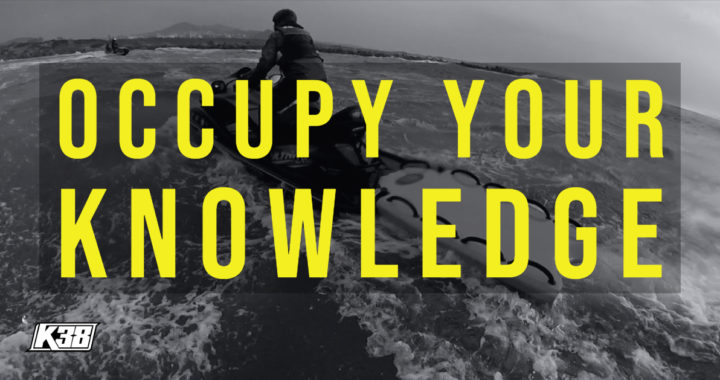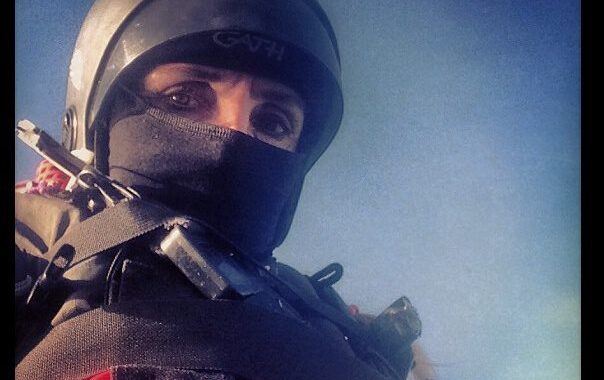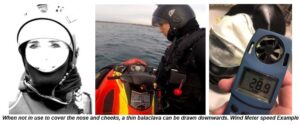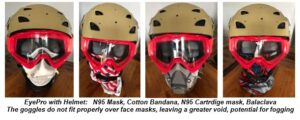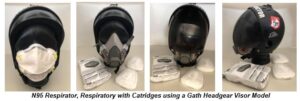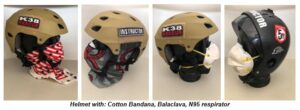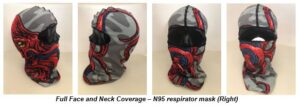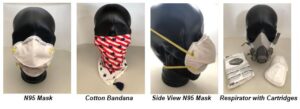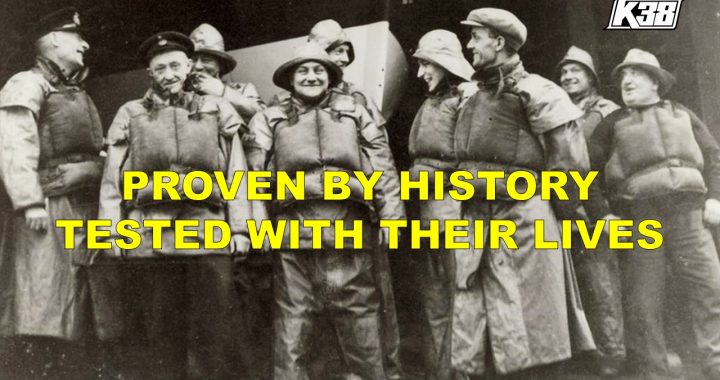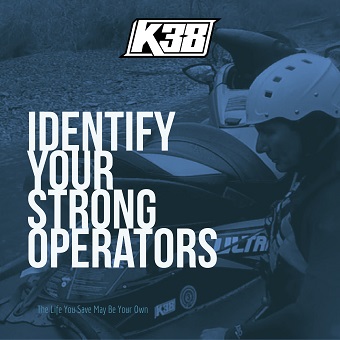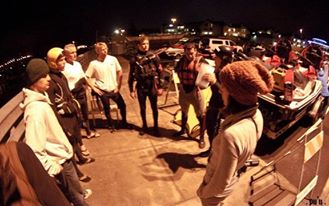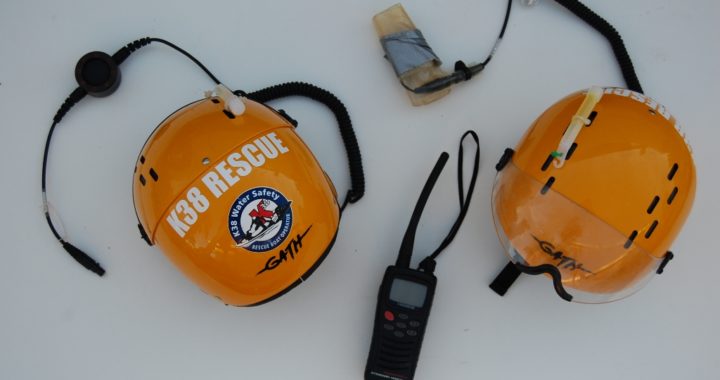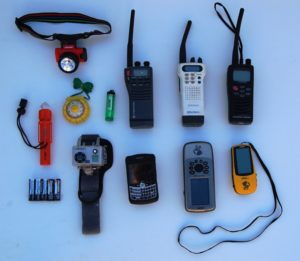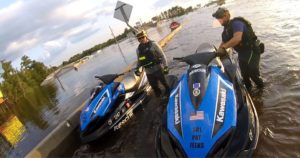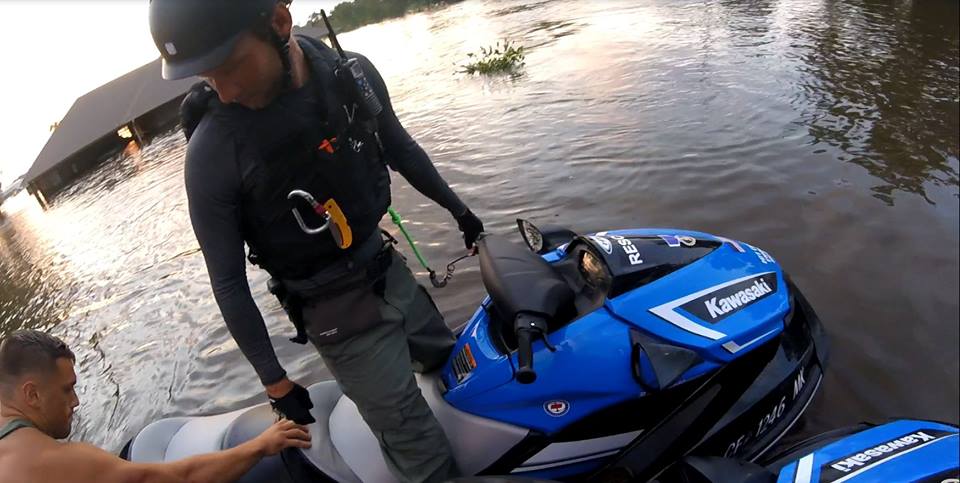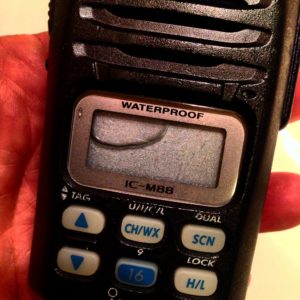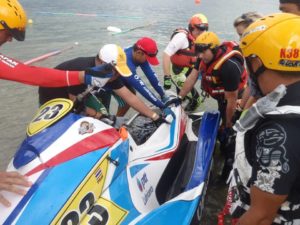Please do not make us gear that we purchase before its ready for field work. Let's engage in a #WARESed conversation.
Put appropriate time and measures into product design and the end result so we can move our maritime culture forward instead of a holding pattern restricting our progress.
We need to modernize our gear list but we need credible and safe equipment that is ready to do the job at the point of purchase.
How many of us have relied on a reference from a colleague then purchased the item to realize that person didn't know what they were talking about and now that poor investment sits in a corner not being used?
That is really hard on the budget and it holds back our potential to solve critical problems we face in life and death situations.
K38 relies on our maritime history, we continue to encourage you to adopt our mindset regarding lessons learned from the past. There is no excuse we can accept today to not listen to these warnings.
We cannot afford to repeat history, but allow it to mentor our path forward.
Beta Test-From the Merriam-Webster dictionary; a field test of the beta version of a product especially by testers outside the company developing it that is conducted prior to commercial release.
Back in 1983 the computer was emerging with a variety of test fields surrounding its function, design and utility use, this is where the term was first coined.
Today it is applied to a variety of discussions regarding new ideas applied to pre-production to get the product ready for sale.
K38 relies on history because history does not lie, but it is often ignored by the ignorant, those resistors of change and progress.
Here is a maritime war history example from Europe in our grandfathers generation: During WWII the Germany Nazi war movement had a fleet of submarines called U-Boats that operated in wolf packs.
They hoped their torpedoes would take out the merchant fleets as part of their war strategy.
TORPEDOWNIA
Off the shores of Poland’s Gydnia is a historical maritime example that was called the Kriegsmarine Submarine Arms Research Center. Referred to today as “Torpedownia”.
Their U-Boat program was experiencing a 30% detonation failure on torpedoes. The Nazis were unable to catch up with the Allies. The only problem is they had a problem. They were mounting losses quickly.
The facility design need was aggressive, critical from their previous test methods lacked vital research results.
However this testing facility came too late after the fact; their timing was not able to save them.
Torpedownia came along too late in the war strategy because the Nazi’s were already behind the pattern in the game. All for the lack of beta testing. Thankfully this did not work out in their favor.
This is warfare maritime history. Today we can relate to these lessons that are written in history, there are many storied examples you can reference and you should.
Failures are dependent on proper beta testing to have been the prominent element in the goals of design. Without this production will reap heavy failures. Brand reputation will suffer and so will those who purchase and buy into the promise of a new solution to a critical problem.
Unfortunately, we have our own disasters to contend with.
Companies or people who have an idea, perhaps they are not maritime engineers, not from the maritime community, do not have 10,000 proven hours or ten years of storied experienced with a Rescue Water Craft. But the idea concept is good. What should be the testing criteria from idea to field?
Or perhaps their testing expert or concept designers have never conducted a true rescue under critical pressure, been in a storm, at night, a flood, a disaster zone, a river, and so you get the picture. How did they evaluate their experiences and are they documented for review? then they are not an expert, do not trust your life with their words.
Maybe they only interviewed from a place of hubris and did not branch out to reach ten other persons to get ten input directions, instead of the tunnel vision of one passage in a zone.
The framework of success lies in the strategy of the pattern, not the concept of use. This is where I excel in the mode of chronological expertise.
Ideas are easy to come by the thousands, everyone has an idea, but the 'devil is in the details', right?
Success is determined by the answers often ignored because testing was not a measure of success, but hubris for the idea or concept. When I test, I test first for the failure, not the goal, but the ways this product can fail or how it may impede specific behaviors or actions.
PROXIMITY OF FAILURE
Critical detailed research has to be mapped out. I am very good at this regarding our training methods and the products we will use.
However, from my estimation, experience and equipment use we simply do not have proper supporting gear. We are borrowing it from other water safety fields and even then, I question why we are using some of these products.
Some are marginal. They don’t fill our use. They are not structural sound, may even lack effective testing and have no laboratory exposure.
The problem once again is a lack of experts who fill in the role of an 'Emperor with no Clothes'. These self appointed gurus will sell suspect gear, promote it and their followers then poorly imitate their example. This is not a good role model for our community. Ask me how I know?
Speak up when you see somebody wearing poor gear or use, or worse yet promoting it! Because if do not speak up and question the presentation you will be supporting the failure of a colleague. And who wants a brother or sister in our water safety culture to fail?
It is your responsibility to ask effective questions about product and conduct appropriate research.
When I ask a company or a salesman tell me the story of this products testing, there is a moment of suffering.
A typical reaction is ‘tested by this group’…they throw down a recognizable name, but that means nothing to me. What matters to me is where are the test methods employed by this legendary group or person? Silence.
How many hours did this legendary group or person test, say maybe 100 hours? Silence
How many failures were experienced during their testing experience? Silence
How many revisions were based off the Beta Testing of these so-called legends were compiled? Silence
These are people with no evidence to prove they are capable of testing products effectively.
They do not qualify to test without ensuring they have documented evidence to back up their name.
They could be a great gal or guy, but that's not the point. Why should I or you trust our life with a simple assessment of 'nice guy'.
This is why K38 buys a lot of gear, tests it for a season, 100 hours or a year before we enjoy saying ‘yes we approve of this product to use for our field need’. We do what others neglect, this is another justification of my Subject Matter Expertise.
It's not my name, its my safety mindset behavior that is concerned about the culture and my fellow brothers and sisters in our community and the equipment we employ.
When I touch a new helmet for review I design my test method around all our colleagues worldwide; their wife or husband, their children, their agency, their colleagues, so you get the picture.
Sadly, there is not that many that pass the ISO standards by simply saying their constructive materials are part of the sales pitch. Slapping a reference for a standard is a sucker punch if you don’t research what that standard represents and how it applies to your field work.
It is hard to source good gear. It typically not for our discipline, we are adapting a large amount of equipment from other uses. It's also difficult for these companies to make specific use gear because they need profit to keep making and testing gear. That translates into numbers.
Since a lot of our water safety disciplines are cross over responses, the gear funnel is narrow.
So how do you determine what a testing subject matter expert is? Contact K38 and we will show you what works and the testing methods and applications we employ. But be prepared to damage and destroy gear and to have it recorded as evolutionary design evidence.
I am confident to say if you can pass muster with K38 your product is sufficient to be called a ‘water safety’ product for field use. We are serious about our commitment to save lives.
Hence the Kawasaki Jet Ski, as the example. A tough hull, a well-balanced craft, a steady and stable craft with an easy re-boarding platform.
Yes, it is a recreationally designed personal water craft, however it is adaptable for a Rescue Water Craft because of its proven use in every water condition from floods, to surf, to open water during day and night, storms and tides.
Its proven its merit as a stable, steady working boat for moderate to high risk use by highly trained Coxswains. It doesn’t have the structural design elements that restrict some of our safety behaviors.
Keep in mind however that we as public safety responders are taking a recreational designed product and adapting our behaviors to work in austere instances that this boat was not to originally perform under.
The manufacturing process is set for a specific target audience. It is important to realize no matter what gear you employ that its intended use may not be in the manner you are utilizing it.
Therefore you assume the liability, so pay close attention. In fact you need to scrutinize and inspect surgically with precision of risk your behavior, training, environment and service life. You essentially are the end point of success or failure.
Hence the testing methods are even more critical to protect the integrity of the manufacturer’s intention as we modify drastically the safety application we desire. People often ask me what is the best PWC to use?
Well, that is an honorable question that requires our test methods and results to their specific need. I am the only person who has conducted such research that I have witnessed. I lead our community by effort, study and application. We have to care about our culture, not only our business alliances, or ideas, but one another.
The old saying ‘the proof is in the pudding’ refers to if you want to discover evidence from a homicide go check the pudding they ate for the arsenic poisoning.
All we need to do is look at photos and videos today to see the evidence-based facts on products, their utility use, the end user results and the failures. And many end users abuse the product recommendations and create an unsafe behavior that others will poorly imitated. Why is this? People fail to ask effective questions. They are weak.
How many so-called water safety products do you purchase that do not have a warranty printed? A user manual? A rating explanation? A 'Care and Inspection' list or guide? When do you retire the product? Where are the warning labels? And then the ones who do all of this are quite noticeable for good reason!
We need these companies who are brave and daring to take on the expense and risk of product design and development. We need to support their professional efforts on our behalf. We have to respect the use of their gear.
But please I beg of you, start with a working plan and not a bro deal. We encourage you to get it right by mapping our a strategy to the pattern of utility use, risk and test methods that are verifiable so we can quantify the productivity of the end result. Which is in our hands.
Please do not send your untested, unproven products or ideas to our water safety community as a sale item to purchase. We do not want to be guinea pigs at our own expense for beta testing your unfinished product design and risk our life and reputation.
So many times I have been at at training where people are 'testing' a new product. They put it on and in ten minutes 'they like it', but have no reason to say why they like it.
Are they simply comparing it to the past junk they were using? Possibly, and sometimes its about how good they look. I call that 'RESCUE FASHION'.
If your company is doing your beta testing and getting feedback from your client after purchase, you have no business designing lifesaving equipment, let alone selling it until you have completed your job. It should not be listed for purchase at this point but after all the fact based evidence has been compiled and sorted.
Lives depend upon it. Test as if it matters.
And be ready to provide us your evidence as proof of testing methods.
Because it matters very much to us and those we serve.
Reference:
Beta test Merriam-Webster dictionary
War History Online: War History Online
Torpedownia, Gydnia, Poland Gydnia History Torpedownia
